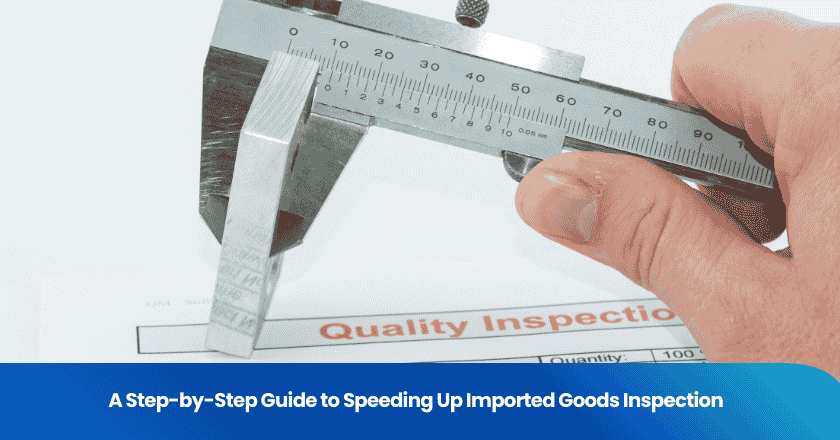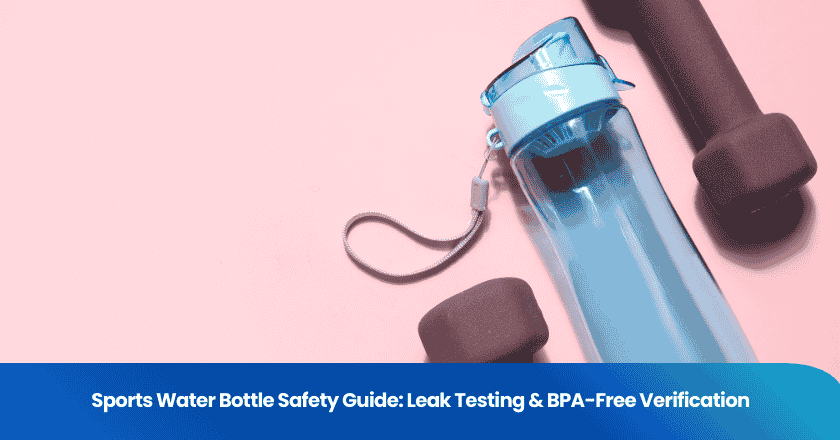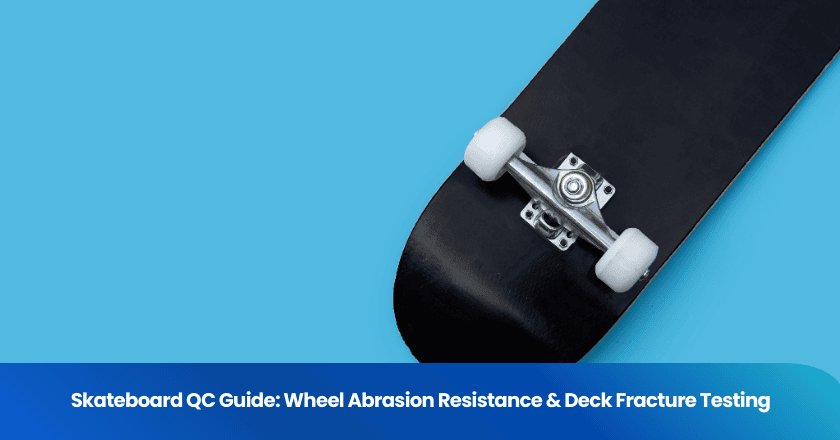
You can speed up imported goods inspection and avoid customs clearance delays by following a clear customs clearance process. Accurate documentation, strict compliance, and proactive communication reduce delays and help you solve common causes of customs clearance delays. Customs clearance problems often start with missing documentation or errors in your import customs clearance paperwork. Customs delays can result from incomplete customs records or late import filings. Hassle-free customs clearance depends on how well you organize your customs documents and respond to customs requests. If you face a delay, review your import documentation and contact customs for guidance on what to do if your order is delayed.
Documentation
Accurate document preparation forms the foundation of a smooth import process. You must submit complete and correct documentation to avoid customs clearance delays. Customs authorities rely on your documents to verify shipments and ensure compliance. Missing documentation or inaccurate documentation often leads to customs clearance problems. Customs delays frequently occur when you overlook key documents or submit incomplete documentation.
Common Mistakes
Many importers experience delays because they make simple errors with documentation. You might forget to include key documents such as commercial invoices, packing lists, or bills of lading. Late filings or missing documentation can trigger customs clearance delay. Customs officials may request additional documents if they find discrepancies. Inaccurate documentation, such as incorrect values or product descriptions, is one of the common causes of customs clearance delays. Customs clearance delays can also result from failing to submit the Importer Security Filing (ISF) on time.
Tip: Always double-check your documents before submission. Review every page for accuracy and completeness.
Organization Tips
You can prevent customs delays by organizing your documentation efficiently. Create a checklist of all key documents required for your shipment. Store your documents in digital folders labeled by shipment date and product type. Use document management software to track submission deadlines and updates. Accurate document preparation helps you respond quickly to customs requests and reduces the risk of delay. Keep copies of all documents for reference during customs clearance. Complete documentation ensures you meet customs requirements and avoid unnecessary delays.
| Key Documents Checklist | Description |
|---|---|
| Commercial Invoice | Details of goods and value |
| Packing List | Itemized list of contents |
| Bill of Lading | Shipping contract |
| ISF | Importer Security Filing |
You improve your import process when you prioritize documentation. Customs clearance depends on your attention to detail and your ability to provide accurate document preparation.
HS Codes
Correct HS codes play a critical role in the import process. You must use accurate and current codes to prevent customs clearance delay and avoid unnecessary inspection. Customs authorities rely on these codes to identify your goods and determine the correct duties and taxes. If you use outdated or incorrect codes, you risk delays and even unexpected customs inspections.
Classification
You need to classify your products with the right HS codes before you ship. The Harmonized System (HS) code is a standardized number that customs uses to categorize goods. Each product type has a unique code. If you misclassify your goods, customs may flag your shipment for inspection. This can cause a delay and increase your costs. You should always check the latest HS code directory or consult an expert if you are unsure.
Tip: Create a product list with assigned HS codes for each item. Update this list regularly to reflect any changes in product lines or regulations.
Verification
After you assign HS codes, verify them before submitting your documents. Double-check your codes against the official customs database. Mistakes in HS code entry often lead to customs delays. Customs officers may stop your shipment for further review if they find inconsistencies. This process can result in a delay and disrupt your supply chain.
| Step | Action |
|---|---|
| Assign HS Code | Match each product to the correct HS code |
| Verify Accuracy | Cross-check with customs database |
| Update Regularly | Review codes for regulatory changes |
You can avoid customs clearance delay by focusing on accurate classification and verification. This attention to detail helps you reduce delays and prevent unexpected customs inspections during the import process.
Duties and Taxes
Calculation
You must calculate duties and taxes accurately before your shipment arrives. Customs authorities use these figures to determine if your goods can enter the country without a delay. Incorrect calculations often lead to delays or even a customs clearance delay. You should gather all relevant information about your products, such as value, quantity, and country of origin. This data helps you estimate the correct amount you owe.
Many importers use online duty calculators to simplify this process. These tools allow you to enter product details and receive an estimate of duties and taxes. If you handle complex shipments, you may want to consult a customs expert. An expert can review your calculations and help you avoid errors that cause a delay.
Tip: Double-check your calculations before submitting your documents to customs. Mistakes can result in extra inspections or fines.
| Step | Action |
|---|---|
| Gather Information | Collect product value, quantity, origin |
| Use Calculator | Estimate duties and taxes |
| Consult Expert | Get advice for complex shipments |
Prepayment
Paying duties and taxes upfront speeds up the import process. When you prepay, customs can process your shipment faster and reduce the risk of a delay. You should check with your logistics provider to see if they offer prepayment options. Some customs systems allow you to pay online, which saves time at the border.
If you wait to pay until your goods arrive, you risk delays. Customs may hold your shipment until they receive payment. Prepayment shows customs that you are prepared and compliant, which builds trust and helps prevent future delays.
Note: Always keep proof of payment. Customs may request this during inspection.
You can avoid customs clearance delay by calculating duties and taxes correctly and paying them in advance. This approach keeps your import process efficient and reduces the chance of a delay.
Packaging and Labeling
Compliance
You must follow all packaging and labeling rules for your destination country. Customs authorities check every shipment for compliance. If you miss a requirement, you risk delays or even a failed inspection. Each country sets its own standards for labels, language, and safety marks. You should review these rules before you pack your goods.
A compliance checklist helps you avoid mistakes:
| Compliance Item | Description |
|---|---|
| Correct Language | Use the official language of the destination |
| Product Description | Match the invoice and customs documents |
| Safety Labels | Add required warnings or symbols |
| Country of Origin Mark | Clearly state where goods are made |
| Regulatory Marks | Include CE, FCC, or other needed marks |
Tip: Double-check your labels for accuracy and legibility. Small errors can cause customs to hold your shipment.
Common errors include missing safety warnings, unclear product descriptions, or using the wrong language. You can prevent these problems by preparing your labels early and reviewing them against the checklist.
Secure Packaging
Proper packaging protects your goods and speeds up customs clearance. You should use sturdy materials that match the type of product you ship. Secure packaging reduces the risk of damage and prevents customs from opening your boxes for extra checks.
Follow these steps for secure packaging:
1. Choose strong boxes or containers for your products.
2. Use padding to protect fragile items.
3. Seal all packages with tamper-evident tape.
4. Label each box clearly and visibly.
If you pack your goods well, you lower the chance of damage and avoid unnecessary delays. Customs officers process shipments faster when they see clear, secure packaging. You also reduce the risk of inspection for damaged or poorly packed goods.
Restricted Items
Permits
You must check if your goods fall under restricted or prohibited categories before shipping. Many countries maintain strict lists of items that require special permits for import. These items often include chemicals, electronics, pharmaceuticals, and agricultural products. If you fail to secure the correct permits, you risk significant delays at customs. Customs officers will not release your shipment until you provide the required documentation.
Tip: Always review the official customs website for your destination country. This step helps you identify which goods need permits and what documents you must prepare.
You can avoid the impact of customs delays by applying for permits early. Start the application process as soon as you confirm your shipment details. Some permits take weeks to process. Early action prevents last-minute problems and keeps your goods moving.
Identification
You need to identify restricted items in your shipment clearly. Customs authorities expect you to declare these goods accurately on all paperwork. Use clear product descriptions and correct codes. If you mislabel or omit restricted items, you increase the risk of customs delays.
Here is a simple checklist to help you:
- Review the restricted items list for your destination.
- Mark all restricted goods on your packing list.
- Attach copies of permits to your shipment documents.
- Communicate with your logistics provider about any special requirements.
| Step | Action |
|---|---|
| Identify Items | Check if goods are restricted |
| Declare Properly | Use accurate descriptions and codes |
| Attach Permits | Include all required documentation |
The impact of customs delays can disrupt your supply chain and increase costs. You protect your business by staying informed and compliant with customs regulations.
Shipment Timing
Peak Periods
You need to plan your shipments with peak periods in mind. Customs offices experience higher volumes during certain times of the year. These periods often include holidays, end-of-quarter months, and major shopping seasons. When you ship during these busy times, you increase the risk of a delay. Customs officers handle more shipments, which can slow down processing.
To avoid unnecessary delays, research the high-traffic periods for your destination country. Many customs authorities publish calendars or notices about expected congestion. You can use this information to schedule your shipments during off-peak times. This strategy helps you reduce the chance of customs delays and keeps your supply chain running smoothly.
Tip: Mark peak periods on your logistics calendar. Share this information with your team to ensure everyone stays aware of potential slowdowns.
Advance Shipping
Shipping your goods in advance gives you a buffer against unexpected issues. When you allow extra time for transit and customs inspection, you lower the risk of a delay affecting your delivery schedule. Early shipping also helps you manage supply chain disruptions that may arise from weather, strikes, or other unforeseen events.
Follow these steps to optimize your shipping schedule:
1. Review your sales forecasts and inventory needs.
2. Identify critical delivery dates for your customers.
3. Plan shipments to arrive well before these deadlines.
4. Monitor your shipments in real time to catch any early signs of delay.
A proactive approach to shipment timing protects your business from costly delays. You maintain better control over your import process and avoid last-minute problems that can disrupt your supply chain.
Communication
Effective communication stands as one of the most practical solutions for minimizing delays during imported goods inspection. You need to stay proactive when dealing with customs authorities and logistics partners. Clear and timely responses help you resolve issues before they escalate.
Customs Authorities
You should maintain open lines of communication with customs officials throughout the import process. Customs may request additional information or clarification about your shipment. Responding quickly to these requests prevents unnecessary delays. You can prepare by keeping all shipment documents organized and accessible. If customs contacts you, review their inquiry and provide complete answers. Use direct language and avoid vague descriptions. You demonstrate compliance and build trust with customs when you offer prompt solutions.
Tip: Set up alerts for messages from customs. This practice ensures you never miss a request and can act immediately.
A simple table can help you track communication with customs:
| Date | Inquiry Type | Response Sent | Status |
|---|---|---|---|
| 06/01 | Document Request | Yes | Resolved |
| 06/03 | Inspection Notice | Yes | Pending |
Logistics Partners
You must coordinate closely with your logistics partners to prevent delays. Share shipment details, customs requirements, and any special instructions. Logistics providers often have experience with customs procedures and can suggest solutions for common problems. You should update your partners about changes in shipment schedules or customs status. Regular communication helps you identify issues early and apply solutions before they affect your delivery timeline.
Note: Schedule weekly check-ins with your logistics team. Consistent updates keep everyone informed and ready to address customs challenges.
You improve your import process when you prioritize communication. Timely responses and collaboration with customs and logistics partners provide reliable solutions for avoiding delays.
Technology and Brokers
Leveraging technology and working with experienced customs brokers gives you powerful solutions for imported goods inspection. You can use automated tools and expert help to address customs clearance problems and minimize delays.
Automated Tools
Automated tools streamline your import process and help you avoid customs clearance problems. You can use digital platforms to submit documents, track shipments, and monitor customs status in real time. These tools alert you to missing paperwork or errors before they reach customs. You reduce delays by catching issues early and applying solutions quickly.
Consider these benefits of automated tools:
- Electronic document submission speeds up customs review.
- Real-time tracking lets you respond to customs requests immediately.
- Automated alerts notify you about deadlines and required actions.
Tip: Set up notifications for every shipment. You stay informed and ready to act if customs needs more information.
A simple table shows how automated tools support your import process:
| Tool Feature | Benefit |
|---|---|
| Document Upload | Faster customs review |
| Shipment Tracking | Immediate status updates |
| Compliance Alerts | Early solutions for problems |
Expert Help
Experienced customs brokers offer solutions for complex shipments and imported goods inspection. You gain access to their knowledge of customs regulations and procedures. Brokers guide you through document preparation, HS code classification, and duty calculation. They communicate with customs on your behalf and resolve customs clearance problems efficiently.
You should consult a broker when you face unfamiliar regulations or high-value shipments. Brokers identify potential delays and suggest solutions before issues arise. Their expertise helps you avoid mistakes and ensures compliance with customs requirements.
Note: Keep your broker updated about shipment changes. Timely information allows them to provide the best solutions for customs challenges.
You improve your import process by combining automated tools and expert help. These strategies give you reliable solutions for minimizing delays and ensuring smooth customs clearance.
Key Strategies to Prevent Delays
You can achieve hassle-free customs clearance by following key strategies to prevent delays in imported goods inspection. These solutions help you streamline the customs clearance process and minimize the risk of customs clearance delay.
Preclearance
Preclearance stands as one of the most effective solutions for speeding up the customs clearance process. You can submit your documentation and shipment details to customs before your goods arrive. Customs officers review your paperwork in advance and identify any issues early. This proactive step allows you to resolve problems before they cause delays.
Benefits of Preclearance:
- Early identification of missing documentation
- Faster processing during imported goods inspection
- Reduced risk of customs clearance delay
Tip: Always check if your destination country offers preclearance programs. You can save time and avoid last-minute surprises.
Compliance Review
You need to conduct a thorough compliance review before shipping your goods. This step ensures that your shipment meets all customs clearance procedures and regulatory requirements. You should verify that your documentation matches the product descriptions and HS codes. Avoid vague product descriptions, as they often trigger additional imported goods inspection.
Compliance Review Checklist:
| Step | Action |
|---|---|
| Review Documentation | Check for accuracy and completeness |
| Confirm HS Codes | Match codes to product descriptions |
| Check CBP Policies | Ensure compliance with regulations |
You improve your customs clearance process when you perform regular compliance reviews. This strategy helps you catch errors early and apply solutions before they lead to delays. You build trust with customs officials and support a smooth import experience.
Note: Schedule compliance reviews for every shipment. Consistent checks help you maintain hassle-free customs clearance.
By focusing on preclearance and compliance review, you implement key strategies to prevent delays. These solutions keep your customs clearance process efficient and reliable.
You can speed up imported goods inspection by following each step in this guide. Organize your documents, verify HS codes, and pay duties in advance. Use secure packaging and check for restricted items. Communicate with customs and logistics partners. For complex shipments or if you wonder what to do if your order is delayed, seek expert advice. Take action now to optimize your import process and reduce the risk of costly delays.
FAQ
What documents do you need for imported goods inspection?
You need a commercial invoice, packing list, bill of lading, and Importer Security Filing (ISF). Customs may request additional paperwork. Always check the requirements for your destination country before shipping.
How can you avoid customs clearance delays?
You organize your documents, verify HS codes, and pay duties in advance. You communicate proactively with customs and logistics partners. You review compliance before shipping to prevent errors.
Why do customs inspect some shipments more than others?
Customs inspect shipments with incomplete documentation, misclassified HS codes, or vague product descriptions. Restricted items and high-value goods also receive extra attention. You reduce inspection risk by following all regulations.
What should you do if customs delay your shipment?
Tip: Contact customs immediately. Review your documents for errors or missing information. Provide requested details quickly. Ask your logistics partner for support and track your shipment status.
Do automated tools help speed up customs clearance?
Yes. Automated tools let you submit documents electronically, track shipments in real time, and receive alerts for missing paperwork. You catch problems early and respond faster to customs requests.
Grow your business with TradeAider Service
Click the button below to directly enter the TradeAider Service System. The simple steps from booking and payment to receiving reports are easy to operate.



